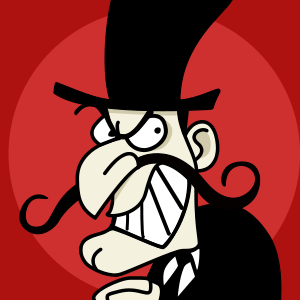
Our Hero the Villain
This is a guest post by Justin Kramon. He is the author of the novels Finny (Random House 2010) and The Preservationist (Pegasus 2013). A graduate of the Iowa Writers’ Workshop, he has published stories in Glimmer Train, Story Quarterly, Boulevard, Alaska Quarterly Review, Fence, TriQuarterly, and others. He has received honors from the Michener-Copernicus Society of America, Best American Short Stories, the Hawthornden International Writers’ Fellowship, and the Bogliasco Foundation. His website is www.justinkramon.com.
_________________________
There’s a satisfying rebellion, a kind of sweet stolen pleasure, in reading psychological thrillers. Picking one up runs counter to the lessons of childhood. Thrillers ask you to walk home alone late at night, leave the window latch open, get in the car with the twitchy fellow who keeps licking his lips and offering you Jolly Ranchers.
For me, one of the great thrills of thrillers is the specific and intense fascination they have with villains. What other form lets you bend down to Hannibal Lecter’s mask so he can whisper in your ear? There’s a prickly pleasure to walking inside these darkest of human rooms, seeing them and smelling them and running your finger along their sticky walls.
I love the psychological digging some thrillers do, so when I decided to write one, I knew I wanted to focus more on characters than on solving a crime. I set the story on a small college campus, which seemed an isolated setting where very different people come together, and I introduced a female student to an older cafeteria worker. As in some classic thrillers I admire, I wanted to blur the moral lines, to examine all the characters’ thoughts, regardless of what part they played in the violence approaching them.
So, for those morally questionable people who share in my strange fascination with villains, here are a few literary evil-doers who inspired me.
1. Mr. Ripley in Patricia Highsmith’s The Talented Mr. Ripley. Highsmith’s novel slowly immerses you in the paranoia of Tom Ripley’s world. We become used to Tom thinking about which friend he’ll need to kill in the same way he thinks of which dinner jacket he’d like to wear. Tom is casual about murder, while at the same time fearful of revealing his past and possibly his sexual identity, but we live in his head so fully that the book gradually converts us to this value system. By the time Tom commits his first murder, we’re only mildly taken aback. More than anything, we’re intrigued. Our hero is suddenly both a hero and a villain, and we love it.
2. Mr. Hilditch in William Trevor’s Felicia’s Journey. I often don’t read the jacket copy of books, so I only began to grasp slowly that Mr. Hilditch was a serial killer. We get to know Mr. Hilditch as a man who relishes food, who keeps a tidy life in the house he grew up in, whose desires seem modest and well-ordered. His co-workers appreciate his gentleness, and lightly pity him. His savagery runs in direct contradiction to his self-contained life, and, for that reason, begins to make sense in a disturbing way.
3. Frederick in John Fowles’s The Collector. Frederick is an intensely lonely, obsessive butterfly collector who abducts a young woman named Miranda, holding her captive in his basement and observing her as if she were one of his butterflies. He has to control her every move in order to preserve his relationship with her, but at the same time wishes that she would love him of her own free will. While Frederick is by turns brutal, irrational, and whiney, there’s a deep and sympathetic sadness to his disappointment, the impossibility of his desire for Miranda. And that sadness brings us closer to some pain, some contradiction that plays at a lower volume inside ourselves.
4. O’Kane in Edna O’Brien’s In the Forest. Based on a real crime, In the Forest follows O’Kane as he brings his victims farther into the woods, and deeper into his own personal darkness, a kind of wild outrage inspired by a childhood of neglect and abuse. One of the many remarkable aspects of this novel is its diversions into unexpected monologues from people whose lives are touched by O’Kane’s story. That noticing of secondary characters in a type of story that normally wouldn’t pay them a second glance points to ways that the landscape of a thriller can be broadened, and how a visionary writer like O’Brien can bring in more and more of the world while maintaining the basic page-turningness of the plot.
5. Senta in Ruth Rendell’s The Bridesmaid. Philip is a man whose defining trait is that he’s disgusted by all forms of violence, but when he meets Senta, who embodies all his sexual ideals, she asks him to do only one thing to cement their relationship: commit a murder. Senta is a wonderfully detailed character, at times sullen, at others manic; a quirky and free-spirited actress who lives in the dingy basement of a moldering house. And despite his disgust for her lifestyle, Philip’s aching attraction to her is palpable. His ordinariness as a character only brings the reader closer to him, making us wonder in the end, as all great thrillers do, how we would act, if truly put to the test.
_________________________
Sign up for our newsletter to have the best of Book Riot delivered straight to your inbox every two weeks. No spam. We promise.
To keep up with Book Riot on a daily basis, follow us on Twitter, like us on Facebook, , and subscribe to the Book Riot podcast in iTunes or via RSS. So much bookish goodness–all day, every day.














